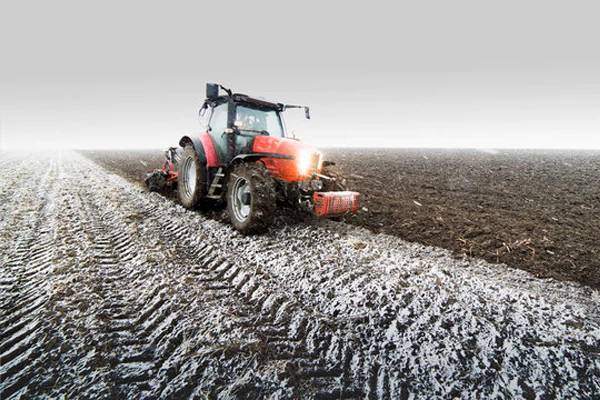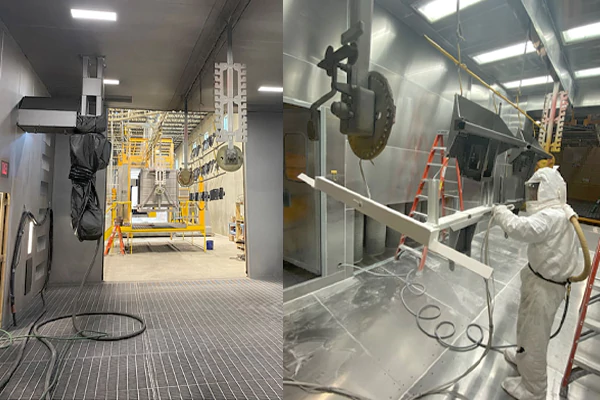In various industries such as manufacturing, construction, and automotive, hydraulic systems play a vital role in powering machinery and equipment.
A key component of these systems is the hydraulic hose, which transports fluid under pressure. Ensuring the cleanliness of hydraulic hoses is crucial to maintain optimal performance and safety.
In this article, we will explore the importance of clean hydraulic hoses, discuss the risks associated with neglecting cleanliness, provide proper cleaning techniques, and highlight the benefits of regular hydraulic hose maintenance.
Importance of Cleaning Hydraulic Hoses
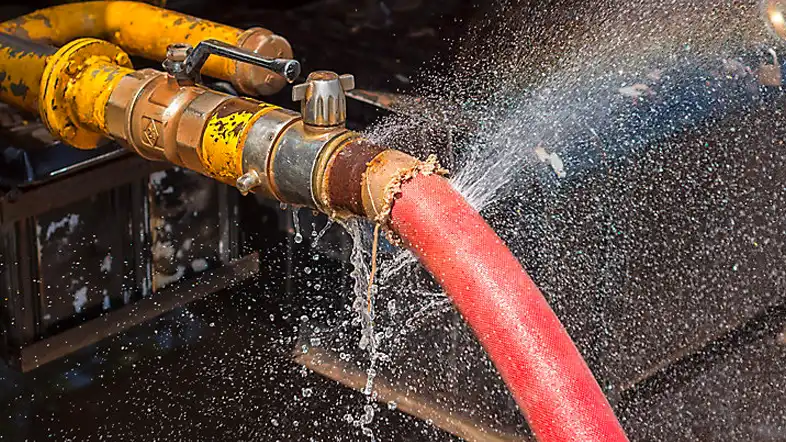
Cleanliness is essential for hydraulic hoses as it directly affects their performance and the overall efficiency of the hydraulic system. Here are some key reasons why clean hydraulic hoses are crucial:
- Prevention of Contamination: Clean hoses prevent contamination of hydraulic fluid, which could lead to damage and malfunctions in the system. Contaminants like dirt, debris, and metal particles can compromise the functionality of hydraulic components.
- Enhanced Efficiency: When hydraulic hoses are clean, the fluid flows smoothly, ensuring efficient power transmission. Clean hoses minimize friction and pressure drops, leading to improved system performance and reduced energy consumption.
- Extended Lifespan: Regularly cleaning hydraulic hoses helps prevent wear and tear caused by debris and contaminants. This extends the lifespan of the hoses and reduces the frequency of replacements, saving both time and money. How to Extend the Life of Your Pressure Washer Hose
- Optimal System Performance: Clean hydraulic hoses contribute to the overall reliability and performance of the hydraulic system. By maintaining cleanliness, you ensure that the system operates at its peak, minimizing downtime and maximizing productivity.
What Is Hydraulic Hose Flushing?

Hydraulic hose flushing is a process used to remove contaminants and debris from hydraulic hoses and the entire hydraulic system. Flushing is typically performed when installing new hoses or when there is a need to clean the system due to contamination or maintenance requirements.
During hydraulic hose flushing, a specialized flushing fluid or hydraulic oil is circulated through the hydraulic hoses and the system to flush out any residual particles, dirt, or contaminants. The flushing fluid is usually a high-quality hydraulic oil with suitable viscosity and additives to effectively remove contaminants without causing damage to the hoses or system components.
The flushing process involves connecting flushing equipment to the hydraulic system and circulating the flushing fluid at a controlled flow rate and pressure. This helps dislodge and carry away any contaminants present in the hoses and system. Flushing is often performed in conjunction with purging, which involves the removal of the flushing fluid and replacement with the desired hydraulic fluid.
Hydraulic hose flushing is essential to ensure the cleanliness and proper functioning of the hydraulic system. It helps prevent contamination-related issues such as reduced performance, component wear, fluid degradation, and system malfunctions. Flushing also prepares the system for the use of new hoses or when transitioning to a different hydraulic fluid.
It is important to follow proper flushing procedures, including using the appropriate flushing fluid, maintaining the correct flow rate and pressure, and ensuring thorough flushing of all hoses and system components. Proper disposal of the flushing fluid and adherence to environmental regulations should also be considered during the flushing process.
When Should You Flush a Hydraulics Hose?
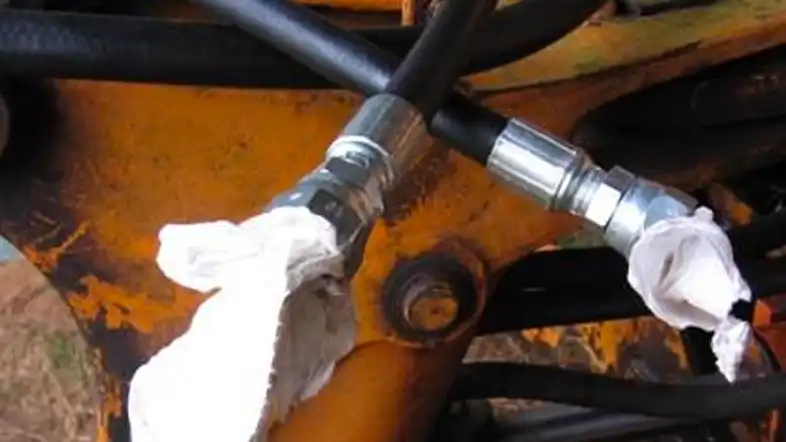
Flushing a hydraulic hose is necessary in several situations to maintain the optimal performance and reliability of the hydraulic system.
Here are some instances when you should consider flushing a hydraulic hose:
- Installation of new hoses: When installing new hydraulic hoses, it is recommended to flush the system to remove any residual contaminants that may have entered during the installation process. Flushing helps ensure that the new hoses are free from debris and ready for operation. How to Install Hydraulic Hose? [Hydraulic Hose Installation Tips]
- Contamination or system failure: If the hydraulic system experiences contamination issues or a component failure, flushing the hoses becomes essential. Contamination can occur due to the entry of dirt, debris, or foreign particles into the system. Flushing helps remove these contaminants and restore the cleanliness of the hoses and the entire hydraulic system.
- Change of hydraulic fluid: When switching to a different type or brand of hydraulic fluid, it is advisable to flush the hoses. This process removes any remaining traces of the previous fluid and prevents potential compatibility issues or fluid degradation that could affect the performance of the new hydraulic fluid.
- System maintenance: Regular maintenance of hydraulic systems may involve flushing the hoses as part of preventive measures. Flushing helps eliminate built-up sludge, varnish, or other deposits that can accumulate over time and impede the smooth operation of the system.
- System upgrades or modifications: When making significant upgrades or modifications to the hydraulic system, flushing the hoses may be necessary. This ensures that any debris or contaminants introduced during the modification process are removed, minimizing the risk of performance issues or damage to new components.
It is important to consult the manufacturer’s guidelines and recommendations when determining the appropriate time to flush hydraulic hoses. They can provide specific instructions and guidelines based on the system requirements and components involved. Additionally, working with a qualified hydraulic professional can help assess the condition of the system and determine if flushing is necessary.
Signs of Dirty Hydraulic Hoses

Identifying the signs of dirty hydraulic hoses is essential for timely maintenance. Here are some common indications that your hydraulic hoses may need cleaning:
- Fluid Discoloration: If the hydraulic fluid appears cloudy, milky, or contains visible particles, it indicates contamination. Dirty hydraulic hoses can introduce impurities into the fluid, affecting its clarity and quality.
- Unusual Noises or Vibrations: Contaminated hydraulic hoses can cause abnormal noises or vibrations within the system. These noises can be a result of fluid restriction or blockage due to debris or contaminants in the hoses.
- Reduced System Performance: When hydraulic hoses are dirty, the flow of fluid is restricted, leading to a decrease in system performance. You may notice slower operation, decreased power output, or difficulties in controlling machinery.
- Leakage or Hose Damage: Contaminants can cause abrasive wear on the inner surface of hydraulic hoses, leading to leakage or damage. If you observe any signs of fluid leakage.
How to Clean Hydraulic Hoses Effectively
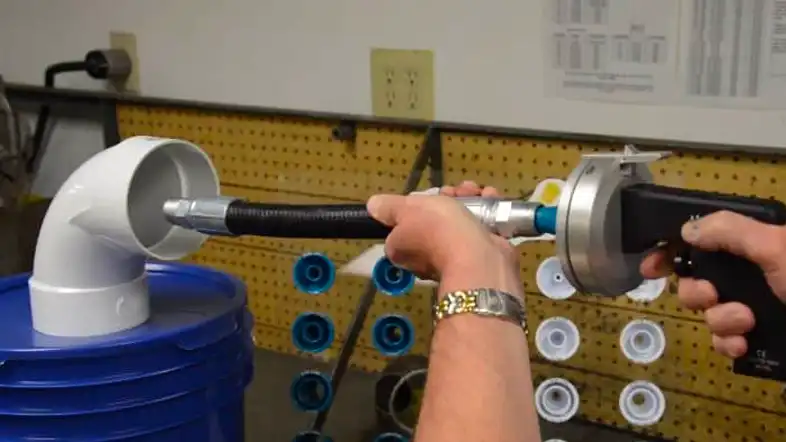
Proper cleaning of hydraulic hoses is crucial to maintain their performance and ensure the longevity of your hydraulic system. By following these effective techniques, you can keep your hydraulic hoses clean and in optimal condition:
1. Gather the necessary tools and equipment
Before starting the cleaning process, gather the following tools and equipment:
- Safety gloves and goggles
- Soft-bristle brushes or nylon cleaning brushes
- Lint-free cloth or towels
- Bucket or container for the cleaning solution
- Mild detergent or hydraulic hose-specific cleaning solution
- Compressed air or clean, dry nitrogen
2. Disconnect the hydraulic hoses
To clean hydraulic hoses effectively, start by disconnecting them from the hydraulic system. Ensure that the system is depressurized and that all valves are closed to prevent any accidental fluid release.
3. Inspect the hoses for visible debris or contaminants
Thoroughly inspect the hydraulic hoses for any visible debris, dirt, or contaminants. Check both the inner and outer surfaces of the hoses, paying close attention to connections and fittings.
4. Remove loose debris and dirt
Use compressed air or clean, dry nitrogen to blow away any loose debris or dirt from the hydraulic hoses. This step helps remove surface-level contaminants before proceeding with deeper cleaning.
5. Prepare the cleaning solution
Fill a bucket or container with a mild detergent or a hydraulic hose-specific cleaning solution. Follow the manufacturer’s instructions for the appropriate dilution ratio, if applicable. Ensure that the cleaning solution is compatible with the type of hydraulic hose material you are cleaning.
6. Clean the hoses with a soft-bristle brush
Dip a soft-bristle brush or a nylon cleaning brush into the cleaning solution. Gently scrub the outer surface of the hydraulic hoses, focusing on areas with visible dirt or contaminants. Use circular motions to remove stubborn stains or grime.
7. Flush the hoses with clean water
After cleaning the hoses with the brush, rinse them thoroughly with clean water. Ensure that all traces of the cleaning solution are removed. This step helps eliminate any residue that may affect the performance of the hydraulic system.
8. Dry the hoses
Use lint-free cloths or towels to dry the hydraulic hoses completely. Pay attention to the hose ends and fittings to ensure they are free from moisture. Proper drying helps prevent corrosion and maintains the integrity of the hoses.
9. Reconnect the hoses and perform system checks
Once the hydraulic hoses are dry, reconnect them to the hydraulic system. Before resuming normal operation, perform system checks to ensure proper functionality and detect any leaks or abnormalities.
10. Regular maintenance and inspections
To maintain clean hydraulic hoses, incorporate regular maintenance and inspections into your routine. Monitor the hoses for signs of dirt or contamination and address any issues promptly. Regularly scheduled maintenance helps prevent costly repairs and ensures the longevity of your hydraulic system.
Remember, cleanliness is essential for the optimal performance and reliability of hydraulic hoses. By following these effective cleaning techniques and implementing regular maintenance, you can keep your hydraulic hoses in top condition, maximizing the efficiency and safety of your hydraulic system.
Hydraulic Hose Flushing Procedure

Hydraulic hose flushing is crucial for maintaining system integrity. Contaminants can degrade performance and cause failures. This procedure ensures hoses are clean before reinstallation or fluid replacement.
Step 1. Disconnect and Isolate the Hose
Begin by safely disconnecting the hydraulic hose from both ends of the system. Ensure the hydraulic system is depressurized before disconnecting any hoses to prevent fluid spraying and potential injury. Cap or plug the open ports on the system to prevent contamination from entering.
If you’re flushing multiple hoses, do them one at a time to maintain system integrity and avoid confusion during reassembly. Carefully inspect the hose for any visible damage, such as cracks, abrasions, or kinks, and replace it if necessary.
Step 2. Prepare the Flushing Equipment and Fluid
Gather the necessary equipment, including a flushing pump, a suitable container for the flushing fluid, and a waste fluid collection container. Select a flushing fluid compatible with your hydraulic system.
In most cases, a low-viscosity hydraulic fluid or a dedicated flushing fluid is recommended. Ensure the flushing fluid is clean and free from contaminants. Connect the flushing pump to one end of the disconnected hose, and position the waste fluid collection container at the opposite end.
Step 3. Initiate the Flushing Process
Start the flushing pump and allow the flushing fluid to flow through the hose. Begin with a low flow rate to dislodge any loose debris. Gradually increase the flow rate to create turbulence and ensure thorough cleaning.
Continue flushing until the fluid exiting the hose is clean and free from contaminants. This may require flushing several gallons of fluid, depending on the length and condition of the hose. Check the waste fluid regularly for any signs of debris or contamination.
Step 4. Reverse Flushing (Optional)
For heavily contaminated hoses, consider reverse flushing. This involves reversing the direction of the flushing fluid to dislodge any debris that may be trapped in the hose.
Repeat the flushing process in the opposite direction, ensuring the waste fluid is collected in a separate container. This step can be particularly effective for removing stubborn contaminants that may have adhered to the hose walls.
Step 5. Air Purging and Drying
Once the flushing fluid is clean, disconnect the flushing pump and use compressed air to purge any remaining fluid from the hose. Blow air through the hose until no more fluid is expelled.
This step helps to prevent contamination of the new hydraulic fluid and ensures proper system operation. Allow the hose to air dry completely before reconnecting it to the system. This will minimize the risk of introducing moisture into the hydraulic system.
Step 6. Reconnect and Test
Reconnect the flushed hose to the hydraulic system, ensuring all connections are secure. Refill the hydraulic system with fresh, clean hydraulic fluid of the correct type and viscosity.
Bleed any air from the system according to the manufacturer‘s instructions. Operate the hydraulic system through its full range of motion and check for any leaks or malfunctions. Monitor the system for any signs of contamination or abnormal operation.
Can You Flush a Hydraulic System With Diesel?
The practice of flushing a hydraulic system with diesel fuel is a topic of considerable debate, and here are key considerations:
Potential Risks:
- Diesel fuel can damage the seals within a hydraulic system. Hydraulic seals are designed to work with hydraulic fluid, and diesel can cause them to dry out, swell, or deteriorate.
- It’s difficult to completely remove diesel fuel from a hydraulic system. Any residual diesel can contaminate the new hydraulic fluid, potentially affecting its performance and longevity.
- While diesel has some lubricating properties, it is not designed to the same viscosity or lubrication standards as hydraulic fluid, and therefore can cause undue wear on the hydraulic pump.
Alternative Approaches:
- Many experts recommend flushing the system with a lower viscosity hydraulic fluid instead of diesel. This allows for better cleaning while minimizing the risk of damage.
- Thoroughly draining the existing hydraulic fluid, cleaning the reservoir, and replacing the filters are often sufficient for routine maintenance.
- If water contamination is the issue, multiple drains and refills with proper hydraulic oil is a safer method.
Sum up, while some people have used diesel fuel for flushing, it carries significant risks. It’s generally safer to use appropriate hydraulic fluids and follow established maintenance procedures.
Conclusion
In conclusion, maintaining clean hydraulic hoses is crucial for ensuring the optimal performance, efficiency, and safety of hydraulic systems. By following the proper cleaning techniques outlined in this article, you can effectively remove dirt, debris, and contaminants from the hoses, preventing potential damage and malfunctions.
Clean hydraulic hoses offer several benefits. They help prevent contamination of the hydraulic fluid, reducing the risk of component failure and system downtime. With clean hoses, the fluid flows smoothly, enhancing system efficiency and minimizing energy consumption.
Regular hydraulic hose maintenance, including cleaning, extends the lifespan of hydraulic hoses, saving both time and money by reducing the need for frequent replacements.


